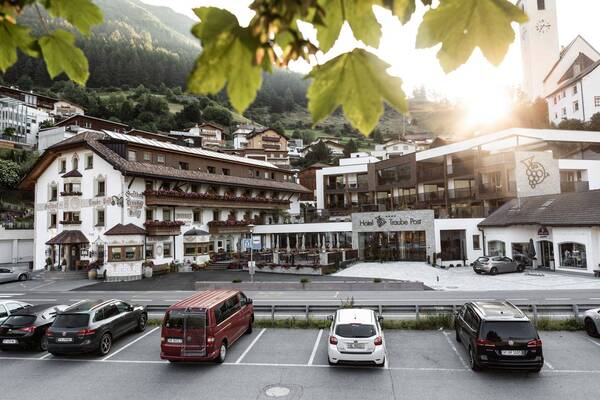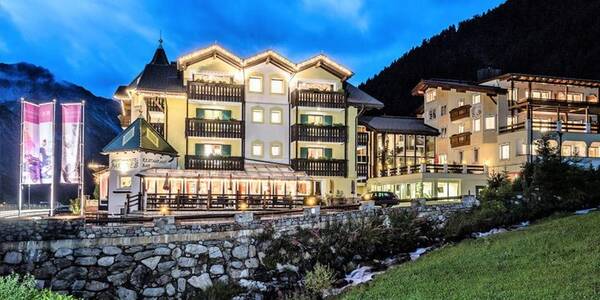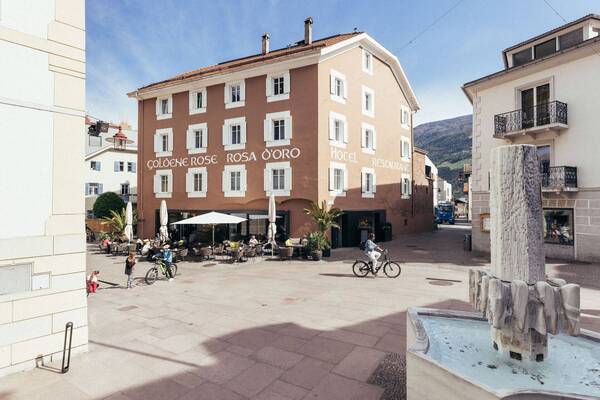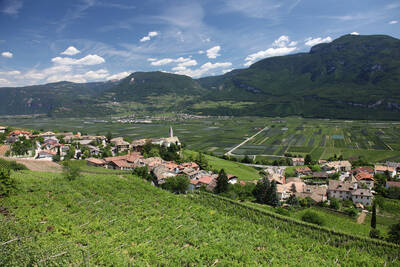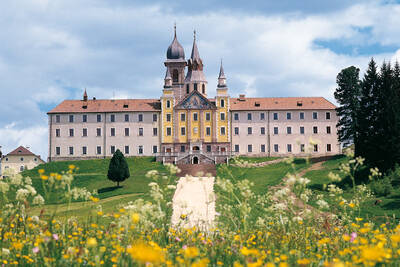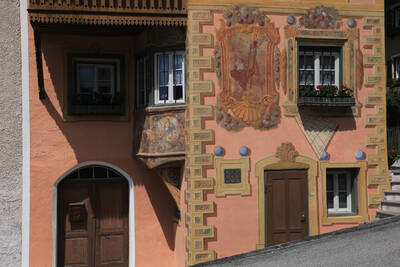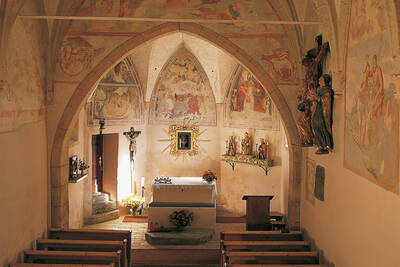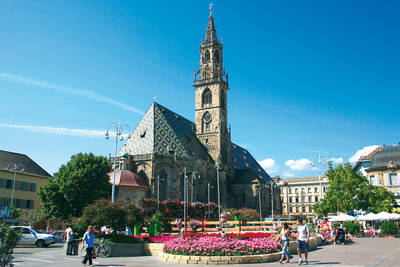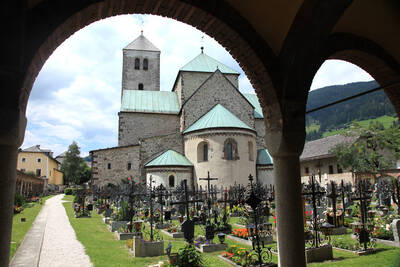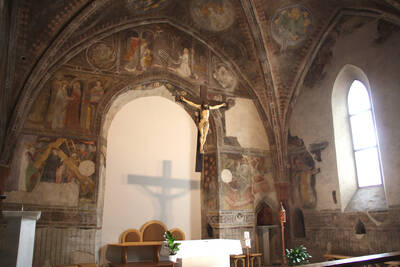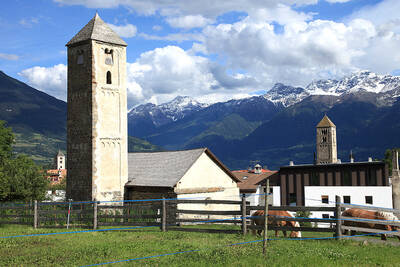The Tartscher Bühel was settled in prehistoric times or in antiquity. For archaeologists, it has been of interest since the 19th century and is also considered a historical center in the Vinschgau. It is assumed that there was a settlement here that was about 1.3 hectares in size, but there is nothing left of it today. However, iron axes, grinding stones, Roman coins, remains of a Rhaetian house, and a deer horn with a Rhaetian inscription were found here. Under the hill, an unfinished bunker system can be found, which was built between 1939 and 1942.
Mystical Tartscher Bühel
The small church, which is located on the Tartscher Bühel, dates back to the 11th century and is surrounded by a mighty stone wall. The Romanesque frescoes of the church are of art historical importance, but they are only fragmentarily preserved. In addition, the church has a cycle of frescoes depicting the martyrdom of St. Vitus. Also worth seeing is the Gothic altarpiece, designed by the Swiss sculptor Ivo Strigel.
The small church, which can be found on the Tartscher Bühel, dates back to the 11th century and is surrounded by a mighty stone wall. The Romanesque frescoes of the church are of art historical significance, however, they are only preserved in fragments. In addition, the church has a cycle of frescoes that show the martyrdom of St. Vitus. Also very worth seeing is the Gothic winged altar, which was designed by the Swiss sculptor Ivo Strigel.
The small church located on the Tartscher Bühel dates back to the 11th century and is surrounded by a mighty stone wall. The Romanesque frescoes of the church are of art historical importance, but they are only fragmentarily preserved. In addition, the church has a cycle of frescoes depicting the martyrdom of St. Vitus. Also worth seeing is the Gothic altarpiece, designed by the Swiss sculptor Ivo Strigel.
The legend of the Tartscher Bühel
According to legend, there was a very famous city where the Tartscher Bühel is today, which shone in splendor and cleanliness. However, the inhabitants did not care much for God, the church, and faith. One day, a pilgrim came to the city and asked for a place to stay and some bread. However, he was rejected everywhere and eventually staggered exhausted out of the city gate. In front of the gate, he angrily picked up a stone and threw it towards the city with the following words: "Heartless city, as cold as stone, shall forever be desolate and barren. Shall perish without mercy, may God hear your pleading cries!" Suddenly the ground opened up and the city disappeared. Only the Tartscher Bühel remained.
 How do you like the content of this page?
How do you like the content of this page?
Please give us your feedback!
Recommended accommodations
Vacation Offers







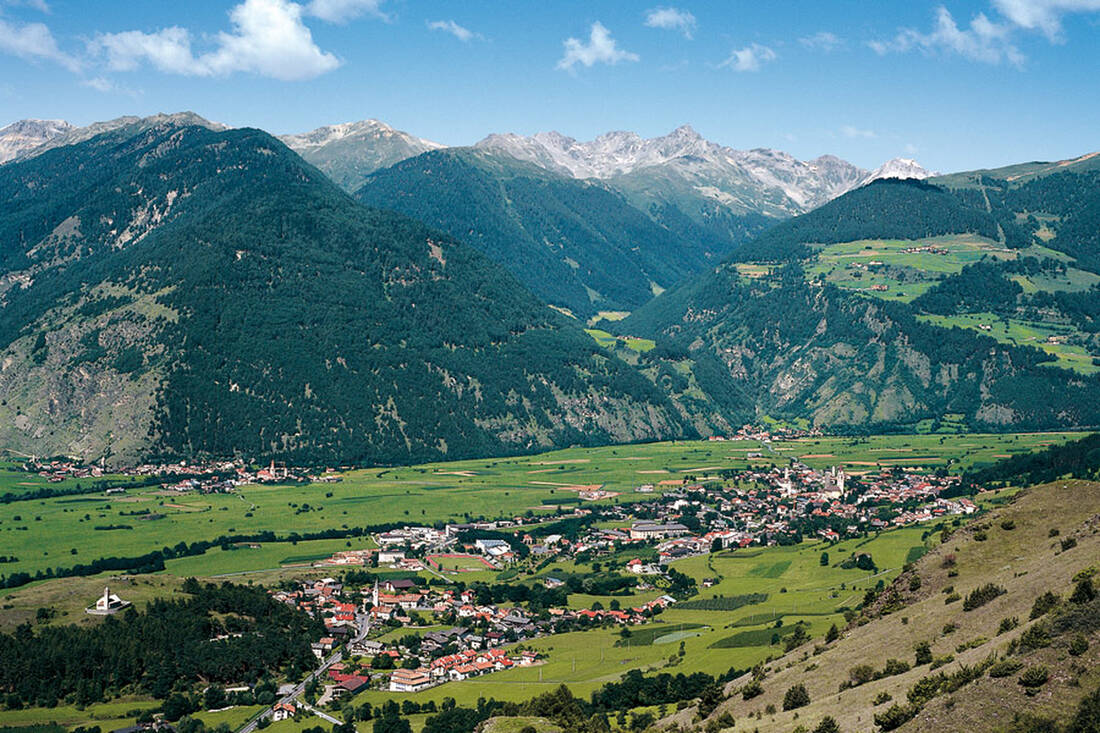
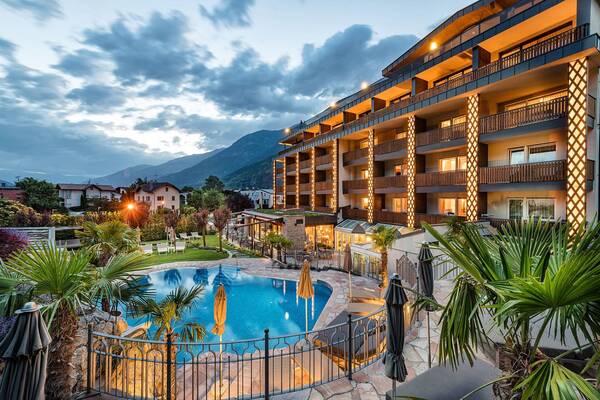





 notice
notice